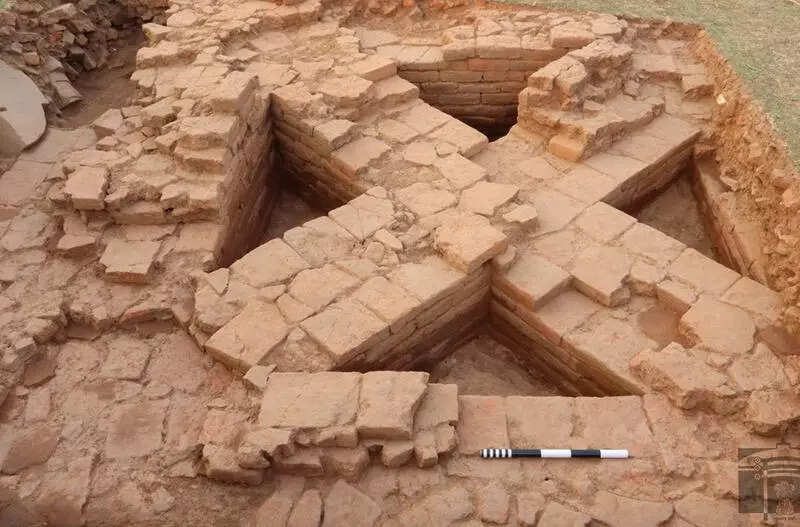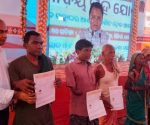ASI confirms 8th-century roots of Jajpur’s ancient Buddhist site | Bhubaneswar News

Kendrapada: The ancient Buddhist site of Ratnagiri in Jajpur district has been officially dated to the 8th century CE, following a breakthrough excavation by the Archaeological Survey of India (ASI). The excavation, which resumed in Dec 2024 after a 60-year hiatus, has unearthed a wealth of artefacts, shedding new light on the site’s historical and religious significance.
Key discoveries include three massive Buddha heads, a rare lion pedestal, and a striking series of votive stupas bearing images of Buddhist deities such as Tara, Chunda, Manjusri, and the Dhyani Buddha. A rectangular Chaitya complex, crafted with intricate brick and stone masonry, and two empty relic caskets, once used to enshrine sacred relics, have also been uncovered.
“Based on inscriptions found on tablets, seals, and votive stupas, we can conclusively date the Buddhist monastery to the 8th century,” said Dibishada Brajasundar Garnayak, superintending archaeologist, ASI Puri Circle.
The excavation has particular significance as Ratnagiri reached its peak during the Bhaumakara dynasty, whose early rulers were devoted Buddhists. “The abundance of votive stupas suggests Ratnagiri was a major pilgrimage centre,” Garnayak added.
Harish Chandra Prusti, former principal of Sahaspur College and a noted researcher, compared the discovery of the lion pedestal to a similar finding at Sarnath in 1905. “This excavation adds another chapter to Odisha’s rich Buddhist heritage, particularly within the ‘Diamond Triangle’ formed by Lalitgiri, Ratnagiri, and Udayagiri,” said Prusti.
Alongside the architectural finds, the site has yielded a rich pottery assemblage, predominantly grey ware, and Sanskrit inscriptions that offer valuable insights into the region’s cultural history. The ongoing excavation aims to uncover links between ancient Odisha and Southeast Asia while tracing the evolution of Vajrayana monastic complexes in early medieval eastern India.
Key discoveries include three massive Buddha heads, a rare lion pedestal, and a striking series of votive stupas bearing images of Buddhist deities such as Tara, Chunda, Manjusri, and the Dhyani Buddha. A rectangular Chaitya complex, crafted with intricate brick and stone masonry, and two empty relic caskets, once used to enshrine sacred relics, have also been uncovered.
“Based on inscriptions found on tablets, seals, and votive stupas, we can conclusively date the Buddhist monastery to the 8th century,” said Dibishada Brajasundar Garnayak, superintending archaeologist, ASI Puri Circle.
The excavation has particular significance as Ratnagiri reached its peak during the Bhaumakara dynasty, whose early rulers were devoted Buddhists. “The abundance of votive stupas suggests Ratnagiri was a major pilgrimage centre,” Garnayak added.
Harish Chandra Prusti, former principal of Sahaspur College and a noted researcher, compared the discovery of the lion pedestal to a similar finding at Sarnath in 1905. “This excavation adds another chapter to Odisha’s rich Buddhist heritage, particularly within the ‘Diamond Triangle’ formed by Lalitgiri, Ratnagiri, and Udayagiri,” said Prusti.
Alongside the architectural finds, the site has yielded a rich pottery assemblage, predominantly grey ware, and Sanskrit inscriptions that offer valuable insights into the region’s cultural history. The ongoing excavation aims to uncover links between ancient Odisha and Southeast Asia while tracing the evolution of Vajrayana monastic complexes in early medieval eastern India.
















